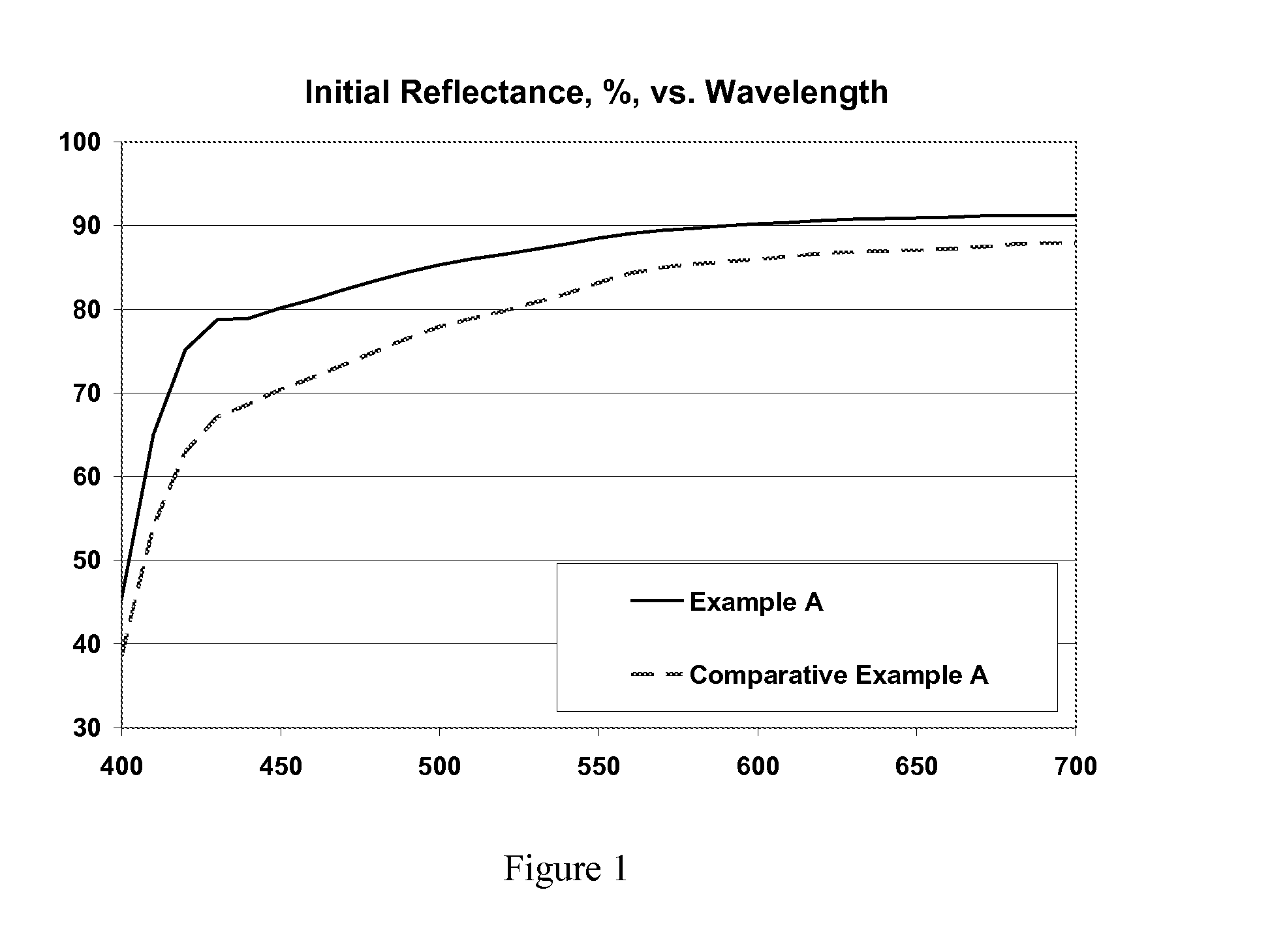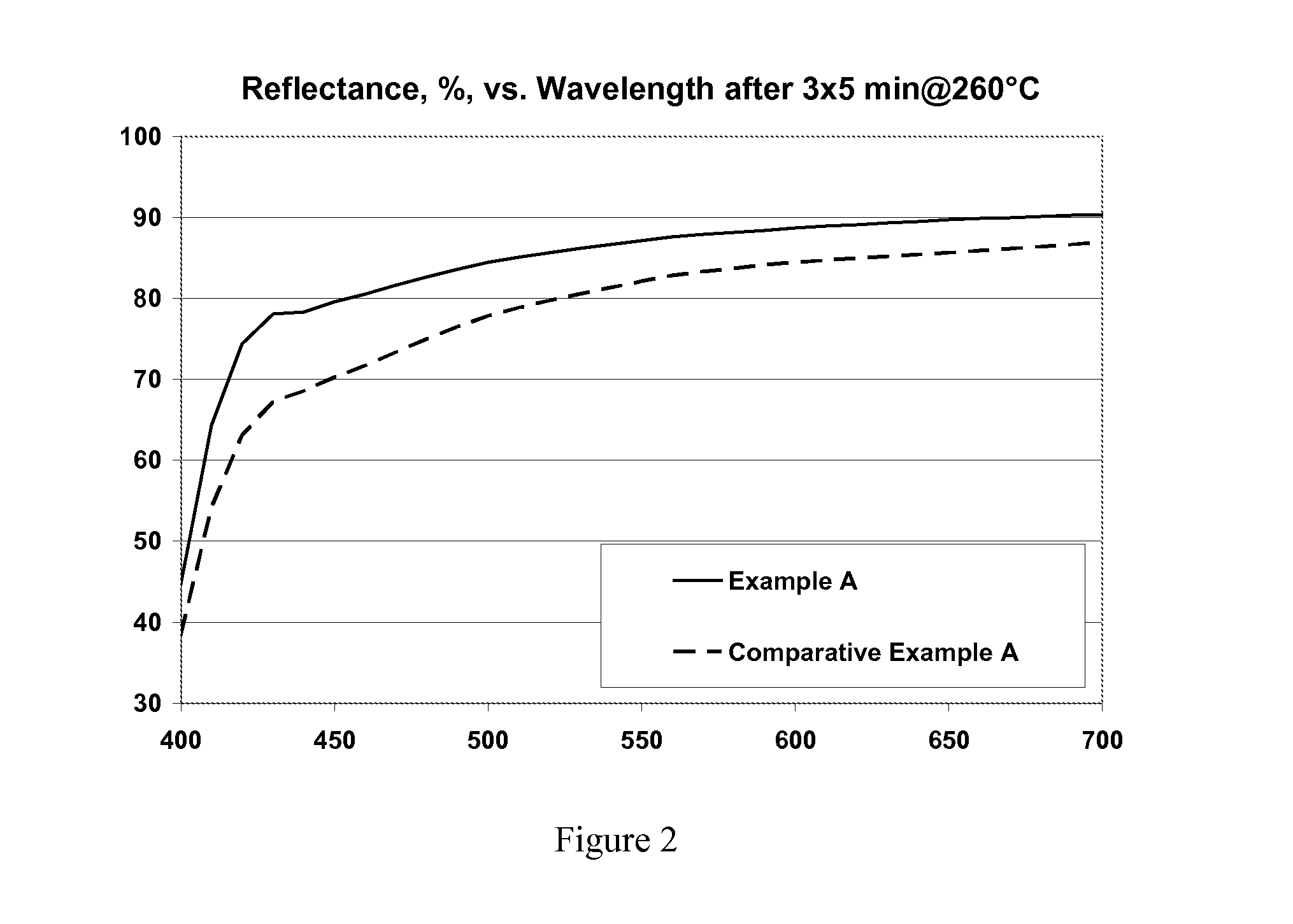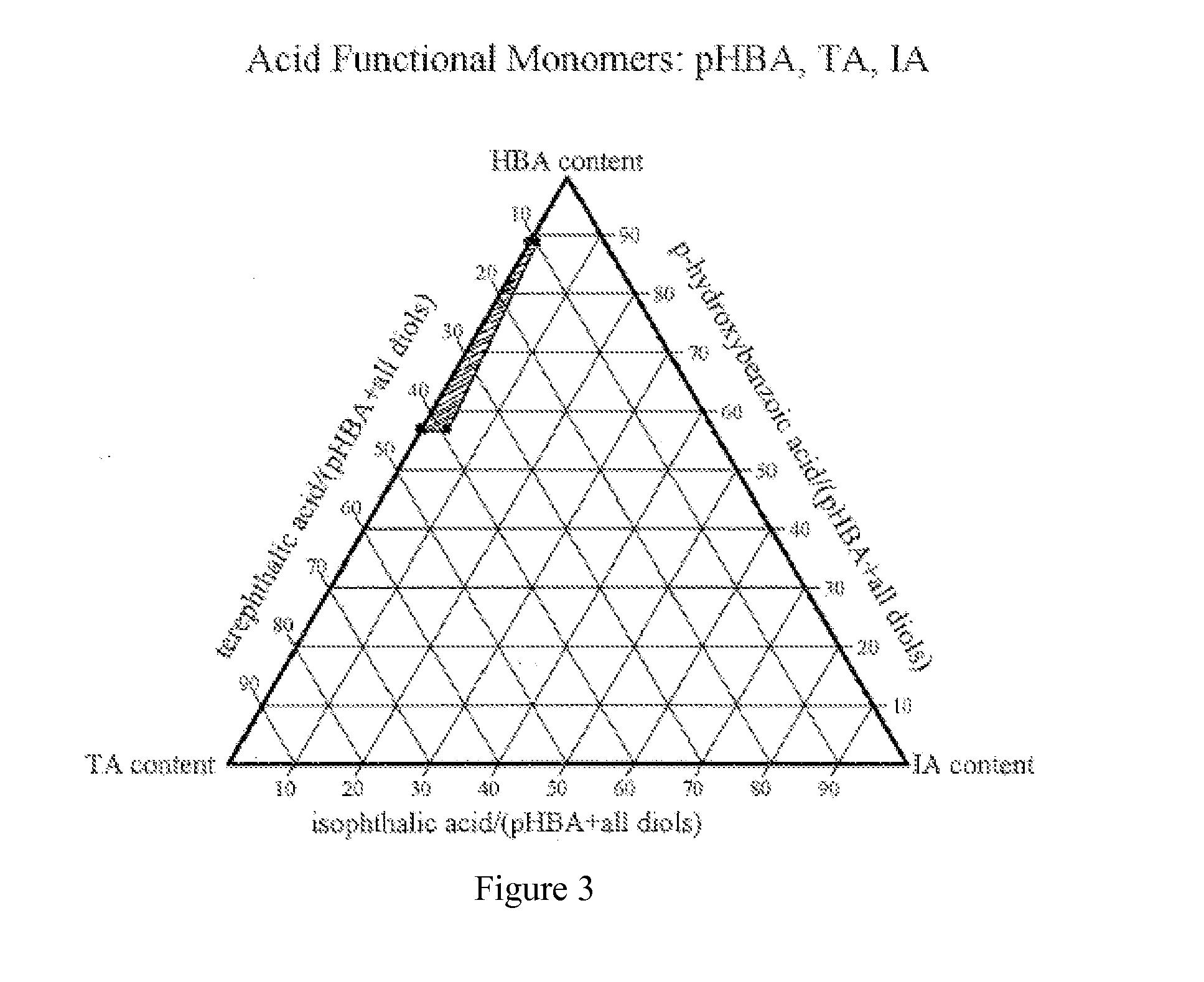Hydroquinone-containing polyesters having improved whiteness
a technology of polyester and hydroquinone, which is applied in the field of polypropylene, can solve the problems that the whiteness properties of the polyester discussed above are not suitable for certain lighting applications, and achieve the effects of improving physical properties, excellent color, and high heat dissipation temperatur
- Summary
- Abstract
- Description
- Claims
- Application Information
AI Technical Summary
Benefits of technology
Problems solved by technology
Method used
Image
Examples
example 1
[0133]The monomers in the amounts 505.9 g A, 270.6 g B, 5.8 g C, 85.4 g, D and 165.3 g E and catalyst were charged into a 2-liter reactor vessel equipped with an electrical heating mantle, overhead mechanical stirrer, reflux condenser, stopcock adapter and distillate receiver. The reactor was purged with nitrogen and then acetic anhydride was added. The mixture was constantly stirred and heated to a temperature of 145° C. and held under reflux for an additional hour. The distillation of acetic acid from the reaction was begun while the external temperature was increased at the rate of 0.5° C. / min to 280° C. Then the heating rate was stepped to 0.75° C. / min to 310° C. to form a pre-polymer. When the reaction reached 310° C. the heating mantle was turned off and removed for faster cooling. After the reactor cooled to ambient temperature, the pre-polymer was removed and ground to a particle size of about 1-2 mm. Solid state polymerization was carried out on the pre-polymer product by r...
example 2
[0135]This example followed the same procedure as Example 1. The ingredient amounts for Example 2 were the following: p-hydroxybenzoic acid (pHBA) 642.1 g, terephthalic acid (TA) 197.2 g, isophthalic acid (IA) 10.9 g, hydroquinone (HQ) 68.5 g, 4,4′-biphenol (BP) 117.2 g. The solid state polymerization was carried out for 13 minutes at 310° C. The DSC analysis gave temperature of crystallization of Tc=338° C. and the melt temperature Tm=382° C. The melt viscosity at 380° C. and shear rate of 100 sec−1 was 1551 poise.
example 3
[0136]This example followed the same procedure as Example 1. The ingredient amounts for Example 3 were the following: p-hydroxybenzoic acid (pHBA) 568.3 g, terephthalic acid (TA) 227.8 g, hydroquinone (HQ) 30.2 g, 4,4′-biphenol (BP) 204.3 g.
[0137]The solid state advancing was carried out for 4.5 hrs at 310° C. The DSC analysis gave temperature of crystallization of Tc=335° C. and the melt temperature of Tm=372° C. The melt viscosity at 380° C. with shear rate of 100 sec−1 was 690 poise.
PUM
| Property | Measurement | Unit |
|---|---|---|
| heat distortion temperature | aaaaa | aaaaa |
| molar ratio | aaaaa | aaaaa |
| heat distortion temperatures | aaaaa | aaaaa |
Abstract
Description
Claims
Application Information
 Login to View More
Login to View More - R&D
- Intellectual Property
- Life Sciences
- Materials
- Tech Scout
- Unparalleled Data Quality
- Higher Quality Content
- 60% Fewer Hallucinations
Browse by: Latest US Patents, China's latest patents, Technical Efficacy Thesaurus, Application Domain, Technology Topic, Popular Technical Reports.
© 2025 PatSnap. All rights reserved.Legal|Privacy policy|Modern Slavery Act Transparency Statement|Sitemap|About US| Contact US: help@patsnap.com



